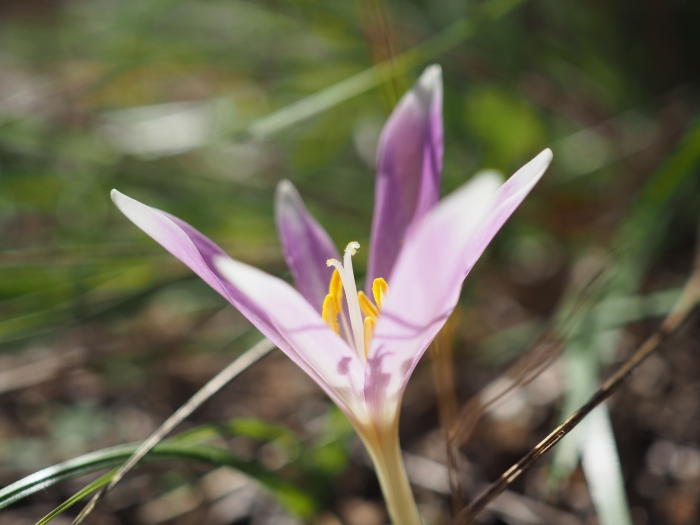Autumn Crocus
(Colchicum longifolium)
Autumn Crocus (Colchicum longifolium)
/
/

© Augustin Soulard
CC BY 4.0
Image By:
© Augustin Soulard
Recorded By:
Copyright:
CC BY 4.0
Copyright Notice:
Photo by: © Augustin Soulard | License Type: CC BY 4.0 | License URL: http://creativecommons.org/licenses/by/4.0/ | Uploader: augustinsoulard | Publisher: iNaturalist |

























Estimated Native Range
Summary
Colchicum longifolium, commonly known as Autumn Crocus or Meadow Saffron, is a perennial herb native to a wide range of habitats including meadows, woodland clearings, and riverbanks in Europe and North Africa. It is often found in calcareous soils and thrives in temperate climates. This species typically grows at a moderate rate to a height and width of 0.5-1 feet (0.15-0.3 meters). The plant features lance-shaped leaves and large, cup-shaped, lilac to pink or white flowers that bloom in the fall, creating a striking display in the garden. The flowers are particularly showy, emerging before the leaves in late summer to early autumn.
Autumn Crocus is valued for its ability to add color to the garden during a season when few other plants are in bloom. It is commonly used in rock gardens, borders, and as underplanting for deciduous trees and shrubs. It requires well-drained soil and can tolerate a range of soil types, including clay, loam, and sandy soils. While it prefers full sun or part shade, it is adaptable to various light conditions. Gardeners should be cautious as all parts of the plant are highly toxic if ingested and can cause skin irritation upon contact. Despite its beauty, it is important to handle this plant with care and ensure it is not planted where children or pets could access it.CC BY-SA 4.0
Autumn Crocus is valued for its ability to add color to the garden during a season when few other plants are in bloom. It is commonly used in rock gardens, borders, and as underplanting for deciduous trees and shrubs. It requires well-drained soil and can tolerate a range of soil types, including clay, loam, and sandy soils. While it prefers full sun or part shade, it is adaptable to various light conditions. Gardeners should be cautious as all parts of the plant are highly toxic if ingested and can cause skin irritation upon contact. Despite its beauty, it is important to handle this plant with care and ensure it is not planted where children or pets could access it.CC BY-SA 4.0
Plant Description
- Plant Type:
- Height: 0.5-1 feet
- Width: 0.5-1 feet
- Growth Rate: Moderate
- Flower Color: Pink, Purple
- Flowering Season: Fall
- Leaf Retention: Deciduous
Growth Requirements
- Sun: Full Sun, Part Shade
- Water: Medium
- Drainage: Fast, Medium
Common Uses
Border Plant, Low Maintenance, Potted Plant
Natural Habitat
native to a wide range of habitats including meadows, woodland clearings, and riverbanks in Europe and North Africa
Other Names
Common Names: Long-leafed Autumn-crocus
Scientific Names: Colchicum longifolium , Colchicum autumnale , Colchicum autumnale var. provinciale , Colchicum castrense , Colchicum castrense , Colchicum corsicum , Colchicum longifolium , Colchicum longifolium var. castrense , Colchicum longifolium var. micranthum , Colchicum longifolium var. provinciale
GBIF Accepted Name: